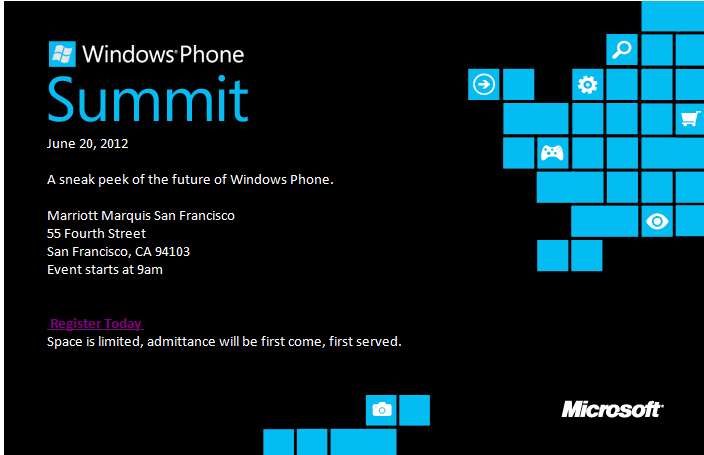Playing Cluedo


Sometimes being an IT journalist is like being a detective. You look for little pieces of evidence, and then start to put two and two together to come up with something that starts to make sense. You're sniffing out information in a blackout, trying to find out what's going to happen when no one is talking outside a corporate cone of silence. It's why the Apple blogs look at each new piece of spare part to leak from China to see what the new iPhone will look like, and why those of us who track Microsoft look carefully at every PowerPoint and every piece of marketing collateral that we see…
It's like playing Cluedo (Clue, for our American readers), as you lay out the cards you have collected tell the world your deductions. Take for example the still rumoured 7-inch Windows tablet: "It was the Windows Phone four screen size rumour, in the Nokia World presentation, with the tablet icon in the PowerPoint".
And now we have the invitations for the Windows Phone Summit to peruse, an event that's rumoured to be where Microsoft will be unveiling Windows Phone 8, codenamed "Apollo" and expected to be the place where Windows 8 and Windows Phone finally meet.

Image courtesy of ZDNet.com
The term "common-core" has been mentioned more than once, and there many theories as to what that actually means – if it’s a set of common APIs for development with separate phone and PC/tablet kernels, or if it’s a whole new kernel that builds on the work done for Windows RT ARM tablets (and for the rest of the x86/x64 world). With the Microsoft cone-of-silence firmly over Windows Phone, we're left making what are best educated guesses.
With a Metro invitation it's clear that Windows Phone 8 is going to carry on building on the UI model it introduced. A grid of square and rectangular tiles suggests a possible move to the same UI model as Windows 8, where applications get to use both sizes of live tile (unlike Windows Phone 7, where rectangular tiles are reserved for the calendar application, and the Microsoft, operator and device manufacturer hubs). But what of the icons on those tiles; is there anything we can glean from them?
Perhaps a teensy tiny bit, but no more than that. Devices that use Metro are sharing an iconography, and while we can note that the game controller icon is closely related to that on the Windows 8 Xbox application, or that the shopping cart matches one used on some Windows 8 presentations about the Windows Store, we can’t tell why they're on the image, or why those specific pieces of Metro iconography have been chosen. And what's that with the eye, or the same forward arrow used in Internet Explorer 10's Metro browser? It's fun to guess, but that's all we'd be doing.
So after all that do we actually know any more than when we started? And there's really only one answer: no we don't. We might be able to change our guesses, but like analyzing the wording on an Apple invitation it's ultimately meaningless. The designers who put together the invitation have their brief, and it's one that's carefully managed. We can look at the images on our screen and guess – but there's no way we can know until the curtains finally lift.
When someone tells you they can read the future in an invitation, take it with a large pinch of salt. They're making as much of a guess as you – perhaps with some more background information, but that's it. They're not privy to the secrets of the ages (or of Redmond or Cupertino or Mouintain View). They're just making their best guess, trying to remember that there's always a man behind the curtain. It's what we're trying to do.
But we're still going to carry on playing detective.
What cards do you hold?
Simon Bisson